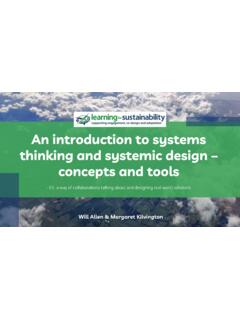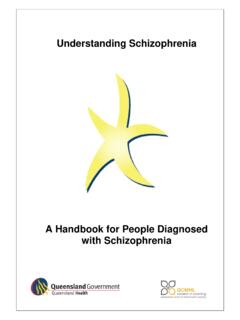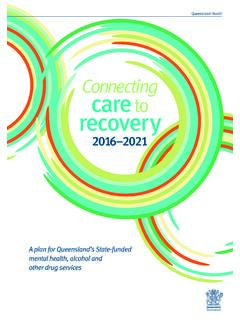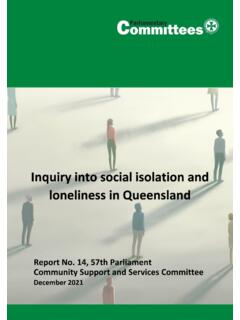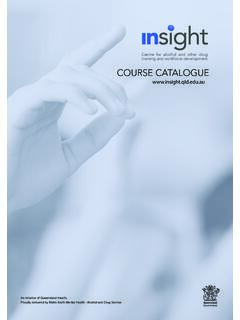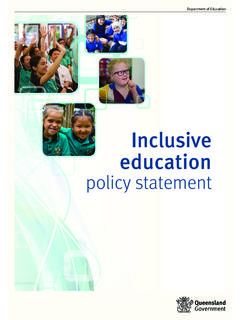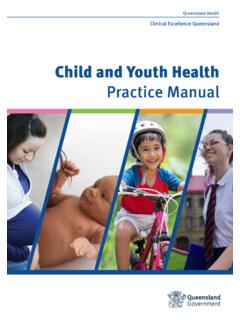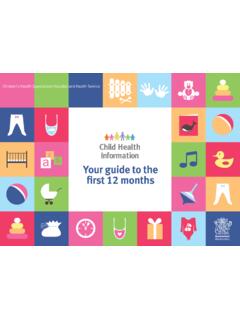Transcription of Resilience Concepts - Learning for Sustainability
1 Resilience Concepts 1. Social Networks and Support 5. 2. Positive Outlook 9. 3. Learning 13. 4. Early Experience 17. 5. Environment and Lifestyle 21. 6. Infrastructure and Support Services 25. 7. Sense of Purpose 29. 8. Diverse and Innovative Economy 33. 9. Embracing Differences 37. 10. Beliefs 41. 11. Leadership 45. 1 2008 - The University of queensland and University of Southern queensland Introduction What is the purpose of this toolkit? This toolkit intends to provide ideas and information How did this toolkit come about? that could be included in new or existing social This toolkit is the outcome of a three year research programs or workshops conducted within Stanthorpe project examining Resilience in a rural community.
2 And other communities to enhance people's Resilience . The study, titled Identifying models of personal and Although many community programs do not have a community Resilience that enhance psychological specific Resilience -building component, the content wellness: A Stanthorpe Study' aimed to clarify what or structure of a program, regardless of its primary factors contribute to peoples positive adaptation to purpose, may be easily modified to include some basic living in a rural community. Resilience principles. In addition, it is envisioned that the wider community may benefit from Resilience - The project design enhancing programs without direct participation.
3 The project was conducted over three and a half years For example, pupils may benefit from their teachers'. in collaboration with the Stanthorpe community and participation, and children may benefit from the consisted of three separate phases. In the first phase, involvement of parents. 14 Stanthorpe residents were interviewed about their perceptions of Resilience and the Resilience of the What is included in the toolkit? Stanthorpe community. Phase I interview responses The toolkit consists of a series of information sheets were used to guide the second phase of the project. explaining the purpose of the toolkit and outlining 11. In phase II, six groups of Stanthorpe residents were Resilience Concepts found to be pivotal in enhancing interviewed and asked to describe the factors individual and community Resilience (see the next which they believed contributed to individual and page for more detail about the 11 Concepts ).
4 In community Resilience . Group participants were addition, details about how to find additional selected based on their membership of one of six information and a bibliography of Resilience -related segments within the Stanthorpe community. One literature are included. group, labelled the Resilient group, consisted of Who is the target audience for use of the people identified as resilient in phase I of the project. toolkit? Three groups were based upon occupation and were labelled as Service Providers, Commercial Sector, and The toolkit is designed to be used by program Farming Families. Another group consisted of Special coordinators such as community workers, health Needs providers or their clients, and the final group, professionals, and others working with individuals labelled Youth, consisted of people aged 18 25.
5 The and groups in the community, including voluntary factors most commonly described by the six groups of or commercial groups and community leaders for study participants, along with findings from a literature example, scout or girl guide leaders, youth group review, formed the basis for the 11 Resilience Concepts coordinators or sports group coaches. contained within this toolkit. A short summary of How can the toolkit be used? phase II results in relation to each concept is contained within the toolkit in the section titled A Stanthorpe Program coordinators may use the toolkit in a number Community Perspective'. of ways. For existing programs, information contained within the Resilience Concepts may provide a useful During phase II an exercise was conducted with check to ensure that materials and methods to be used a group of Stanthorpe High School students.
6 The within the program adhere to Resilience -enhancing students were given the Resilience Concepts and asked principles. Modifications may be made to the existing to describe and photograph what the Concepts meant program to improve this adherence. Where a new to them. Where available, the results of this exercise program is being created, coordinators may wish to are contained within the section labelled Perspectives select Resilience Concepts most relevant to the goals of from Stanthorpe High School Students'. the program and then build core components of the Phase III of the project involved further consultation program around these Concepts .
7 With the community via a workshop and the development of this toolkit. 2 Building Resilience in Rural Communities Resilience Concepts Explained What information is included in each concept section? What is Resilience ? Each concept section consists of two sheets. On the first Resilience refers to the capacity of an individual or page, a description of the concept is given, followed by community to cope with stress, overcome adversity three prompts and ideas for enhancing Resilience using or adapt positively to , 2 The ability to bounce this concept at the individual, group, and community back' from negative experiences may reflect the innate level.
8 On the other side of this page are case studies qualities of individuals or be the result of Learning and of how the Resilience concept has been applied in experience. Regardless of the origin of Resilience , there other programs or communities. The next page of is evidence to suggest that it can be developed and each concept contains a synopsis of how the concept enhanced to promote greater wellbeing. Resilience relates to community-wide interview findings from is not regarded as a quality that is either present or the Stanthorpe Resilience Study. An overview of the absent in a person or group but rather a process which concept through the eyes of Stanthorpe High school may vary across circumstances and students is also presented where available.
9 The second side of this sheet contains a brief review of relevant What is a Resilience concept? research findings reported in the scientific literature. The 11 Resilience Concepts contained within the toolkit How are the Concepts related? incorporate the factors most commonly reported to enhance community and individual Resilience . They Resilience is known to be a complex construct with were drawn from the results of interviews undertaken many interrelated factors. As a result, some of the within the Stanthorpe community and a review of Concepts overlap and no single concept is necessary previous literature. Within psychology, these Resilience or sufficient to enhance Resilience for any one Concepts are sometimes referred to as protective person.
10 The relevance of each concept is also partly factors' as they are thought to protect individuals from dependent on the individual group or people and developing serious problems as a result of exposure their subjective experiences. For example, depending to stress or adversity, known as risk factors'.3 Many on values and interests, utilisation of the concept researchers now believe that enhancing a person's labelled beliefs' may encompass prayer or other forms level of Resilience may be a more effective way of of worship, meditation, spending time in nature, or preventing problems and improving wellbeing than improving self confidence. Enhancing beliefs' may trying to modify individual risk factors.
